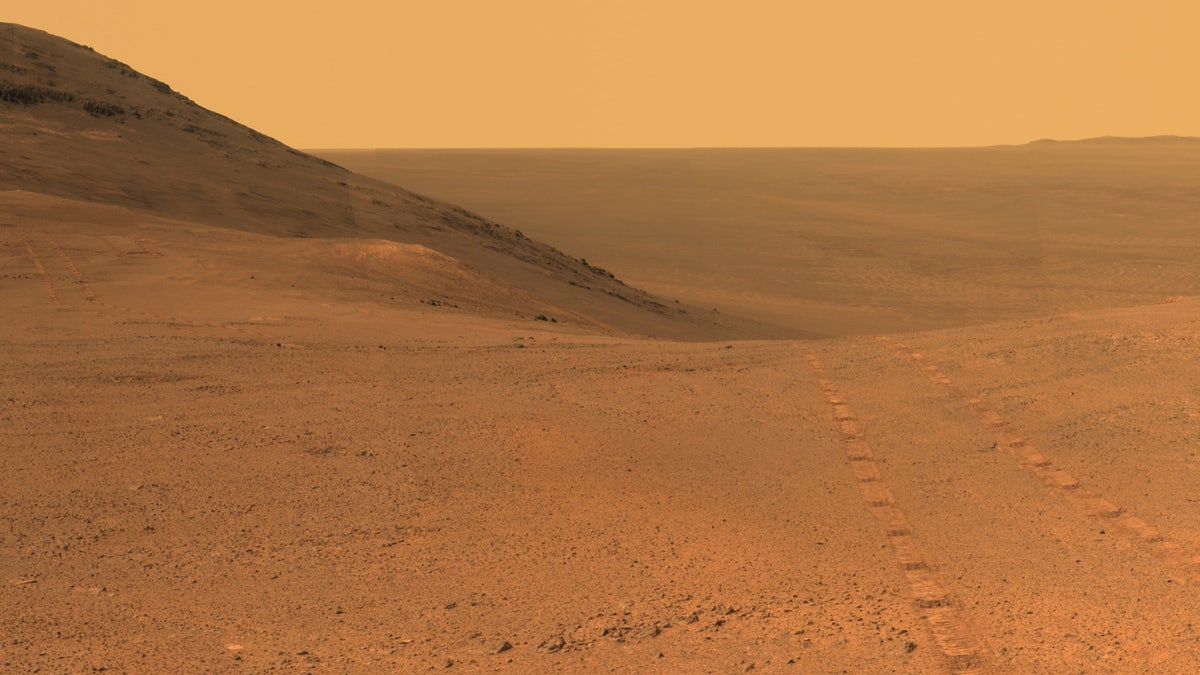
Tracks from NASA's Opportunity rover on Mars are visible on the Martian surface in this image taken in June 2017. After months of silence from Opportunity due to a dust storm on Mars, NASA has begun a 45-day campaign to reestablish contact with the rover. (NASA/JPL-Caltech/Cornell/Arizona State Univ.)
The planet-enveloping dust storm on Mars has settled enough for NASA to start a 45-day active-listening period in which the agency hopes to make contact with the rover Opportunity after three months of silence, NASA announced yesterday (Sept. 11).
So, for the next 45 days, NASA engineers will nudge the spacecraft several times a day, rather than the three times a week that had been the procedure. That schedule is based on the hope that the rover is now harvesting enough solar power to receive and respond to commands. In this "active-listening" procedure, NASA will send instructions that force the rover to create a signal at a specific frequency if it is powered up and not seriously damaged.
If the rover has not yet made contact when those 45 days have ended, NASA will have to determine how to proceed. In a statement released Aug. 30, the agency said it would continue to listen passively for the rover until the end of January. [Mars Dust Storm 2018: What It Means for Opportunity Rover]
The new stage of the recovery plan was triggered when NASA made two consecutive measurements of atmospheric opacity, called tau, of less than 1.5. When Opportunity first lost contact with Earth, that measurement was above 10. The agency hopes that now that the dust is settling out of the Martian skies, the rover's solar panels will be able to successfully charge so the can robot re-establish contact with Earth.
More From Space.com
When the plan was announced, some scientists affiliated with the mission expressed concern that pegging this active-listening period to the atmospheric opacity would start the clock on Opportunity too soon.
That's because all that dust simply falls down, which means there's nothing to stop it from falling onto the rover's solar panels. And if the problem is dust blocking the solar panels from charging, it doesn't matter whether the dust is floating in the air or resting on the panels. Mars has seasonal weather patterns called dust devils that could clear that dust away, but those won't begin until November — by which point, the 45 days of active outreach will have ended.
The rover has been exploring the surface of Mars since 2004, far outlasting its original mission timeline of 90 Martian days (a Martian day is about 40 minutes longer than a terrestrial one). But the engineers and scientists who control the rover haven't heard a peep from Opportunity since June 10.
They hope the robot is merely hibernating, waiting for the dust to settle. Either way, the next 45 days may be the best chance Opportunity has left.
Original article on Space.com.
